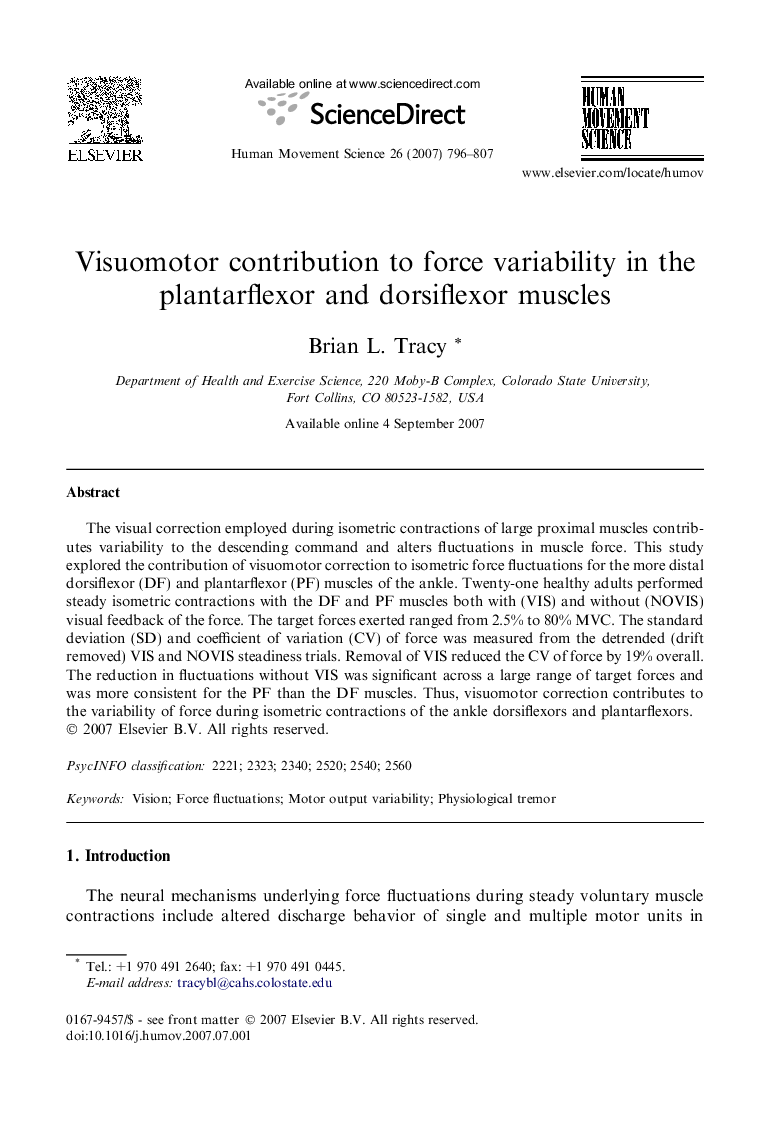| Article ID | Journal | Published Year | Pages | File Type |
|---|---|---|---|---|
| 928812 | Human Movement Science | 2007 | 12 Pages |
The visual correction employed during isometric contractions of large proximal muscles contributes variability to the descending command and alters fluctuations in muscle force. This study explored the contribution of visuomotor correction to isometric force fluctuations for the more distal dorsiflexor (DF) and plantarflexor (PF) muscles of the ankle. Twenty-one healthy adults performed steady isometric contractions with the DF and PF muscles both with (VIS) and without (NOVIS) visual feedback of the force. The target forces exerted ranged from 2.5% to 80% MVC. The standard deviation (SD) and coefficient of variation (CV) of force was measured from the detrended (drift removed) VIS and NOVIS steadiness trials. Removal of VIS reduced the CV of force by 19% overall. The reduction in fluctuations without VIS was significant across a large range of target forces and was more consistent for the PF than the DF muscles. Thus, visuomotor correction contributes to the variability of force during isometric contractions of the ankle dorsiflexors and plantarflexors.
